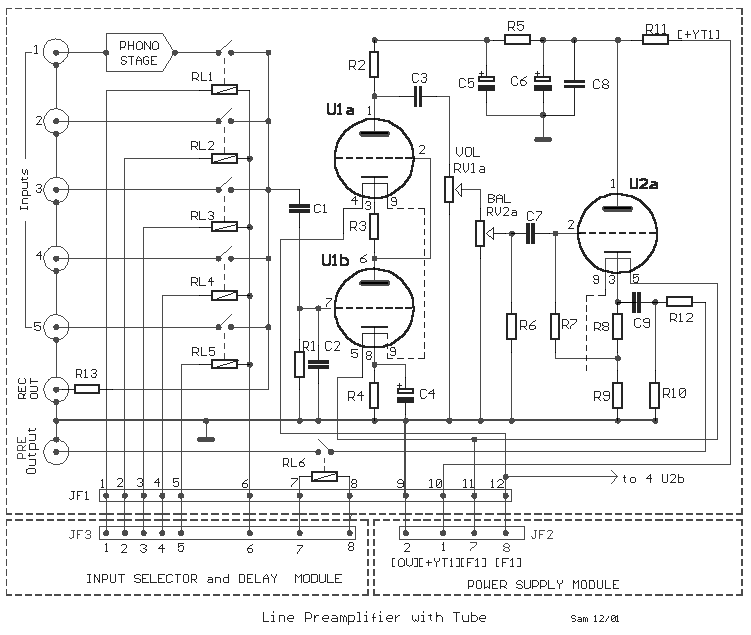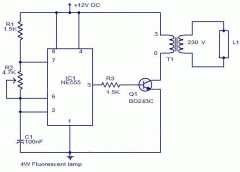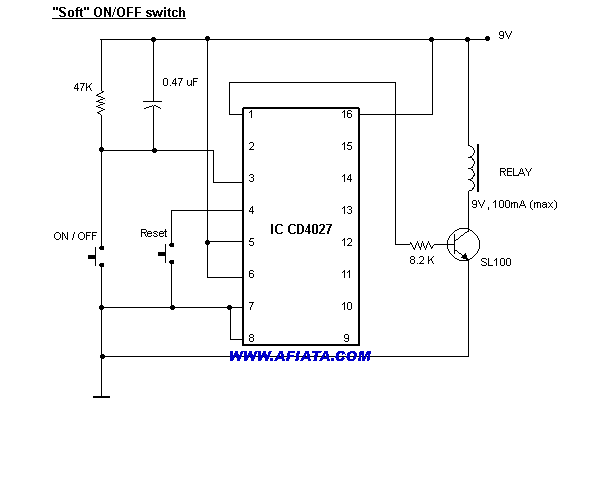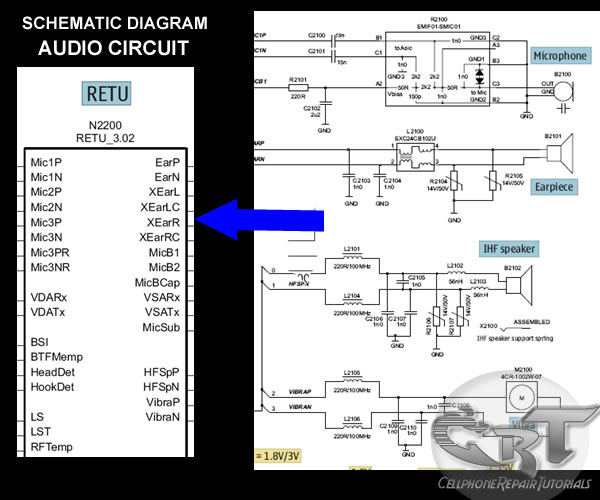
Bidirectional thyristor AC contactor interface circuit
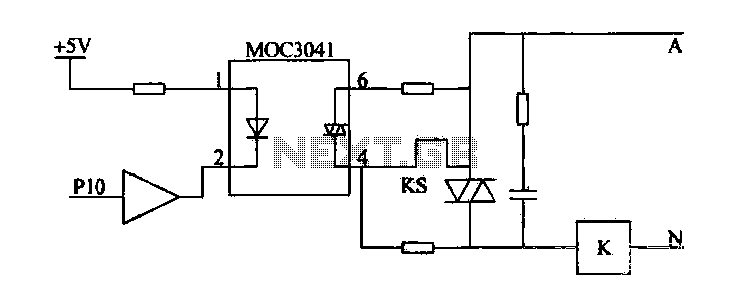
Device for an intermediate relay. The circuit utilizes a Triac AC contactor interface, employing the MOC3041 Triac output optical coupler to trigger the Triac. When Pl0 is low, the Triac will be activated, energizing the AC contactor coil.
The described device serves as an intermediate relay, facilitating the control of AC loads through a Triac-based interface. The core component of this circuit is the MOC3041, an optically isolated Triac driver that enables safe and efficient control of high voltage AC loads from low voltage control signals.
In operation, when the control signal Pl0 is low, the MOC3041 activates, allowing current to flow through its output. This action triggers the connected Triac, which subsequently energizes the coil of an AC contactor. The contactor, once energized, can control larger AC loads, making this setup ideal for applications requiring isolation between low-voltage control systems and high-voltage AC circuits.
The MOC3041 is designed to handle the necessary gate current for the Triac, ensuring reliable switching under varying load conditions. The circuit may also include additional components such as resistors and capacitors to stabilize operation and protect against voltage spikes, enhancing the overall reliability of the system.
This configuration is particularly useful in automation and control systems where the isolation of control signals from high power circuits is critical for safety and performance. The use of a Triac allows for efficient control with minimal power loss, making it suitable for various industrial and commercial applications.Device for intermediate relay. As shown in Figure is the use of Triac AC contactor interface circuitry. Which is using MOC3041 Triac output optical coupler for triggering the T RIAC KS. When Pl0 is low, KS will be turned on, the AC contactor coil is energized.
The described device serves as an intermediate relay, facilitating the control of AC loads through a Triac-based interface. The core component of this circuit is the MOC3041, an optically isolated Triac driver that enables safe and efficient control of high voltage AC loads from low voltage control signals.
In operation, when the control signal Pl0 is low, the MOC3041 activates, allowing current to flow through its output. This action triggers the connected Triac, which subsequently energizes the coil of an AC contactor. The contactor, once energized, can control larger AC loads, making this setup ideal for applications requiring isolation between low-voltage control systems and high-voltage AC circuits.
The MOC3041 is designed to handle the necessary gate current for the Triac, ensuring reliable switching under varying load conditions. The circuit may also include additional components such as resistors and capacitors to stabilize operation and protect against voltage spikes, enhancing the overall reliability of the system.
This configuration is particularly useful in automation and control systems where the isolation of control signals from high power circuits is critical for safety and performance. The use of a Triac allows for efficient control with minimal power loss, making it suitable for various industrial and commercial applications.Device for intermediate relay. As shown in Figure is the use of Triac AC contactor interface circuitry. Which is using MOC3041 Triac output optical coupler for triggering the T RIAC KS. When Pl0 is low, KS will be turned on, the AC contactor coil is energized.

